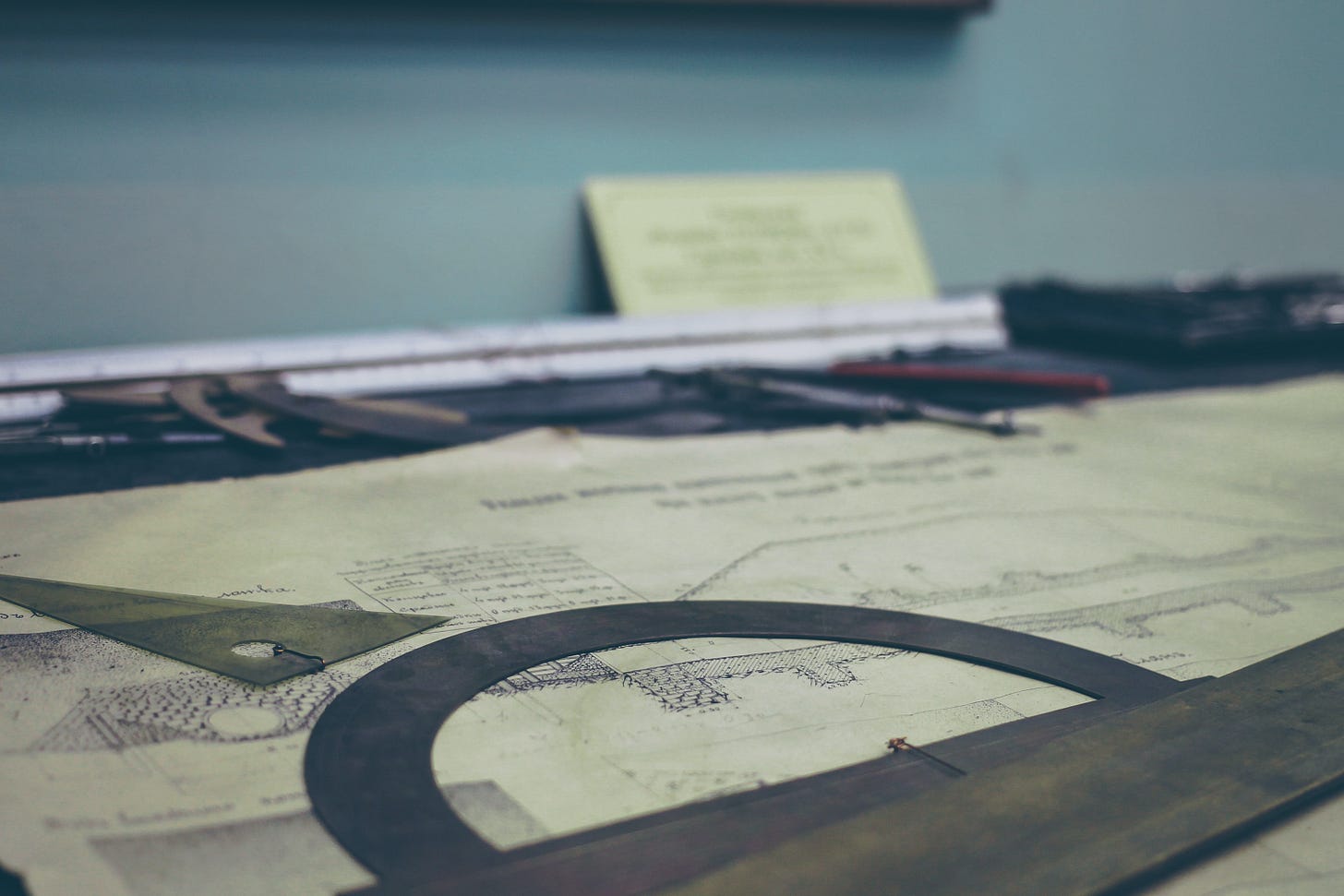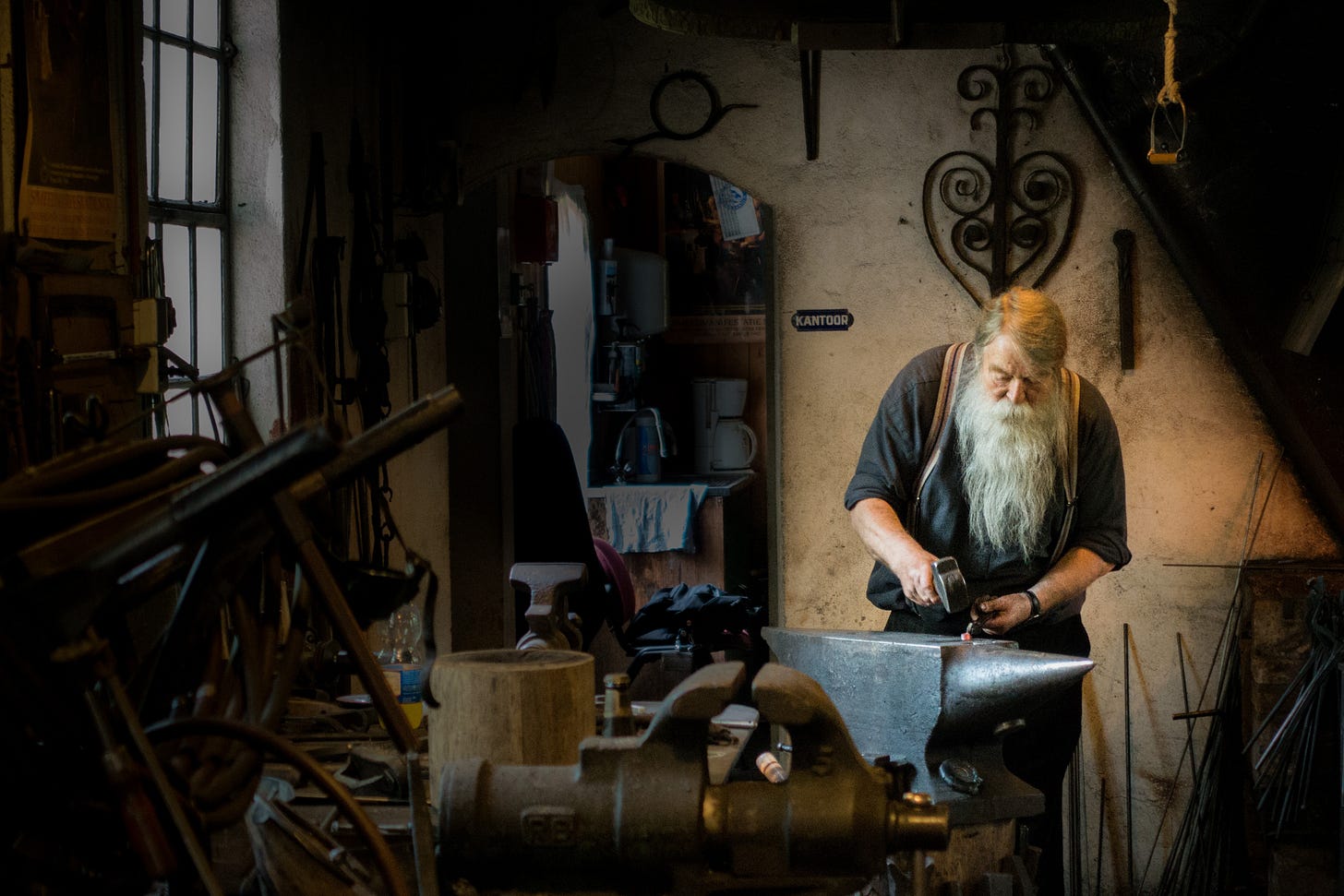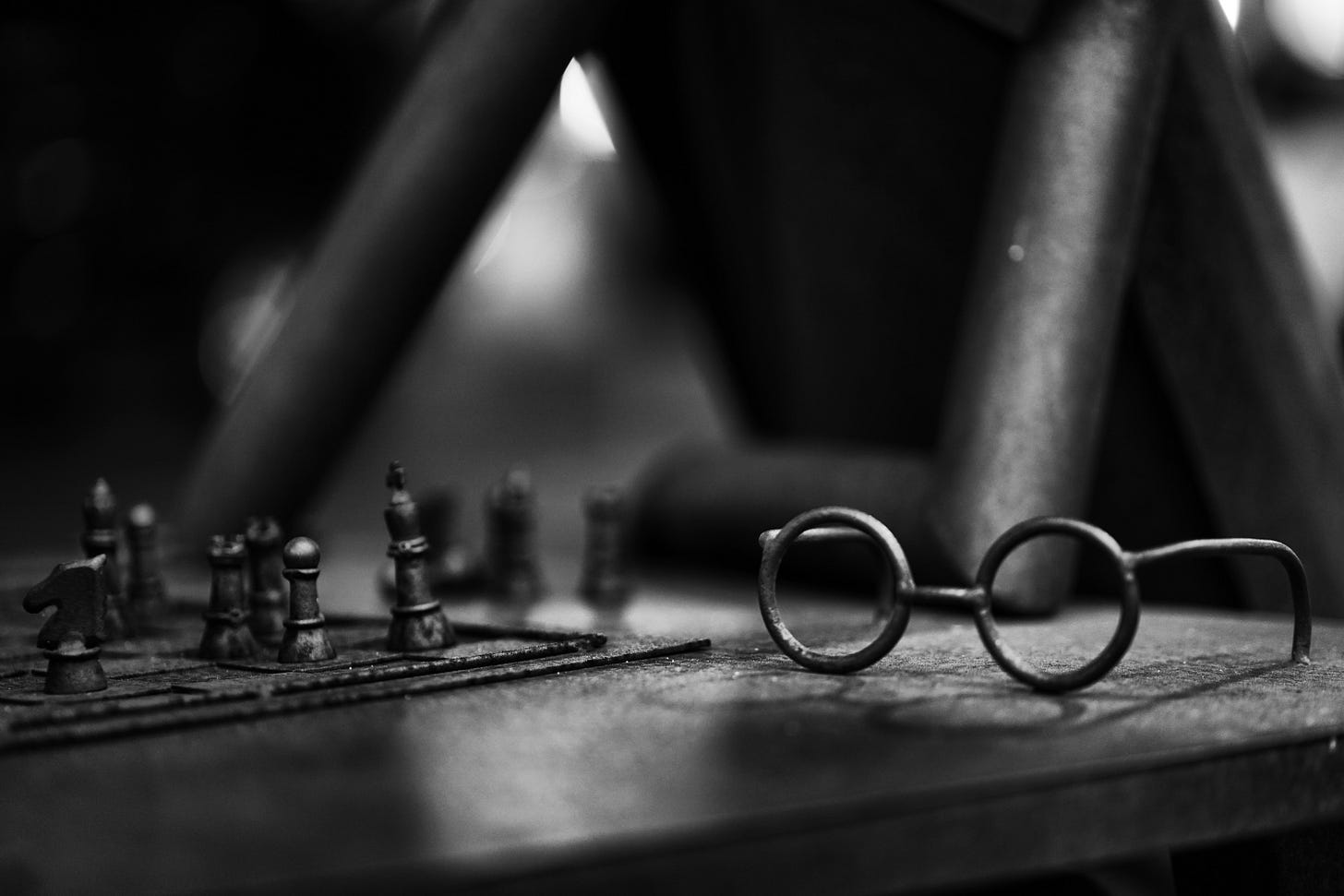[Study] Defining Elegant Design
What is this conceptual tool, and where does it come from? While I answer those questions, I take the opportunity for a meta reflection on the way I interiorize concepts.
Follow up on Design Patterns
First let’s follow up on my previous entry since, as always, interesting points arise from online conversations. I framed the list of design patterns as what would constitute a “minimum viable RPG.” While I think it holds some truth, there is a fair amount of subjectivity in that statement.
For me, each identified pattern that you remove brings you closer to a game that feels incomplete, a game that you are creating yourself instead of following. You can totally grab the setting of one, the resolution from another and match them, although we could not consider them standalone products.
Which led to what I meant by “RPGs” in that context:
The RPG as a material is a blueprint usable by the target audience to conduct a session.

Since we are on terminology, “design pattern” also needed some explanation. I derive this term from the "programming patterns" which I would define by:
A design pattern is an efficient solution to a common problem.
For example, you typically want to bring "uncertainty" in the game, yet give some control to players over it. Resolution systems are a good way to solve this, which makes it a design pattern.
Lastly, the GM advices seem to be the one that felt the less crucial of the list. Which makes sense because for many experience GM, those are not relevant.
Holy trinity of overused terminology
Our vocabulary gets filled with new words, especially when you dive into another field. They emerge somewhere and crystallize when we need an abstraction. Although, it might be counterintuitive, but they don’t necessarily improve communication. During my years studying and making games, some even became obnoxious.
Fun
The so-called “Fun” really is a way to say “Good” specifically applied for video games. So why is it so common? Well, making games is a complex matter, and you might want a holistic umbrella to summarize what makes them appealing. Also, it makes it sounds like you know what you are talking about since you use the proper terminology…
Flow
Some other words are more precise, yet not directly actionable. I can’t count the time I heard “Flow” as a holy grail of the player experience. It’s a relatable state, everyone felt this intense focus, losing yourself in the activity and getting excellent at it. Although, even if it is an outcome desirable for many games, theory only gets you so far. The only handle you have is the balancing. Trying to place the challenge over time at the right spot, so it stays between boring and overwhelming for your target audience. This exercise tends to be so complex that you'll have to rely on playtesting to get a sense of it.
Elegant
The last one we are defining today is finally one you can leverage in your design practice. While I have been doing so for quite some time now, the concept has remained vague before I collect my thoughts, do some research, and articulate them in this article. Hopefully, you'll learn as much as I did.
Defining to understand
Definition is an exercise in simplification, to strip away all the unnecessary. You survey all the ideas that feel connected, and you explore each of them in detail. Divide aspects, combine notions, until you get a clear one-liner. All that process is a great way to interiorize a concept, and you’ll see that this process of distillation as similitude with what elegant design is.
The Thoughts
While they are difficult to manipulate in a logical reasoning, listening to your feeling is probably the best way to start an investigation. An instantaneous direction that pretty much always holds some truth.
Elegant design is what gives me a sense of well-made “craft,” every piece fitting perfectly together. In order to reach this feeling, I need to streamline things, see if I can achieve the same result with “less.” If I’m being honest, it may have more to do with solving a puzzle I set to myself than actually delivering a better product.

The Research
The difficult part with studying is to know when to end, with each new reading reframing your view. You are looking for the point where you spend more time parsing than reflecting. Although, sometimes you get bored before reaching it, that's when deadlines come handy.
My journey took me to the functionalist school of thought first, and more specifically Dieter Rams and his “Good Design” Principles. All are important, but two especially relevant:
“is aesthetic – The aesthetic quality of a product is integral to its usefulness because products are used every day and have an effect on people and their well-being. Only well-executed objects can be beautiful.”
“is as little design as possible – Less, but better. Simple as possible but not simpler. Good design elevates the essential functions of a product.”
It really sounds like an ode to artisans. The beauty is in the creativity, the technique and the usability that result from it. You are making it for others to benefit, you are making it by answering constraints, and creativeness comes in the way of solving them. Design is not Art, because it has a purpose.

Looking then for a more contemporary designer, I found this article from Keith Rice.
“An elegant game delivers its core experience to the player as simply as possible.”
I recommend you to read the extended definition the author provides. It adds nuances to it. However, this one-liner already seems to include the main caveat I can think of. If “simply” is obviously the key word here, “core experience” and “as possible” factors in the context. All other objectives and constraints need to be preserved. Le me reframe that to put the technique as the subject (another trick to interiorize ideas)
Elegant design is the act of simplifying as much as the context allows.
It is not the concept of your game, but a tool to convey it more efficiently. It’s a constraint you put on yourself to improve the quality of the product. Furthermore, it’s a skill you train, that includes a multitude of heuristics you need to interiorize.
Illustration
Classification and comparison is another way to extract understanding on a specific topic. So, let’s get more concrete and bring examples now. A good one would be games as similar as possible on all aspects except for “Elegance.”
Chess and Go are both somehow “noble,” people don’t think about them as kid’s games, they can even be categorized as sports or art. They are very well-balanced due to their almost symmetrical design. Likewise, they are beasts of emergence, with a perceivable infinite number of relevant options. Yet, there is strategy that can be leveraged to make thoughtful choices.

None of those shared aspects impact whether the game is Elegant or not. Because one of the two definitely is more than the other. Go, you may have guessed, as way fewer rules than its counterpart. The action you have is simple, no specific moveset to learn, no edge cases (“en passant”, castling, …).
So, what additional takeaways can we get from this exercise? Well, first, as with most of the design techniques, it can only be measured on a spectrum, not with binary values. A game is more or less elegant. Also, here’s a list of question you could use to evaluate a ruleset: How many actions can you choose from? How many steps to follow? And how many exceptions to the regular processes ? In video games, we would talk more about inputs and parameters, but the idea is the same.
Next Time
That is a lot of theory, and that’s the point of that “Study” section, to be fair. Although, we are done defining the approach itself and next time, we’ll break down the concrete effects it generates. The upsides, downsides and well… neutral sides really. As the craft goes, for any design choices, there is a whole array of implications you need to evaluate as early as possible.

